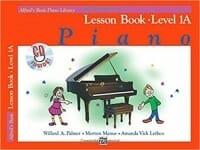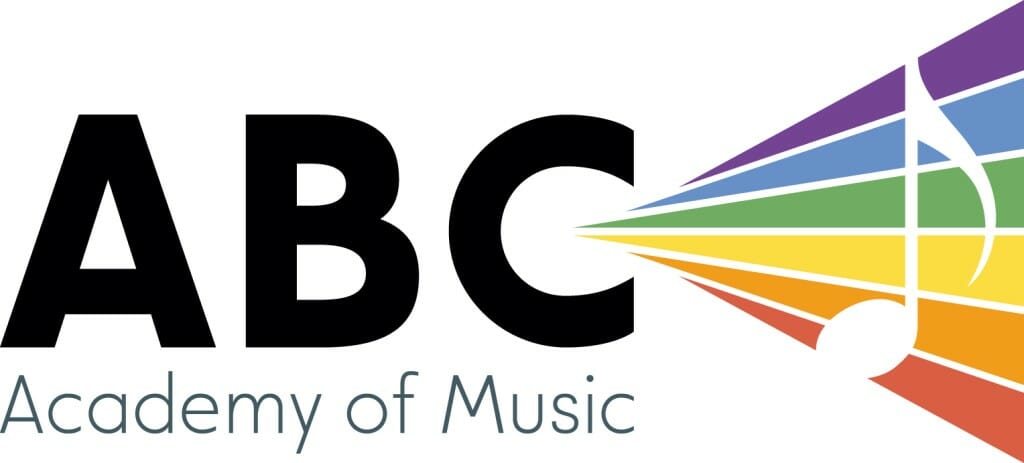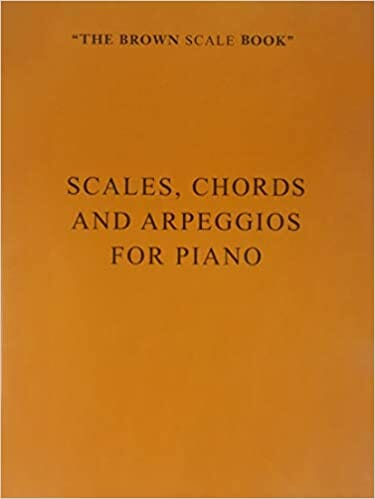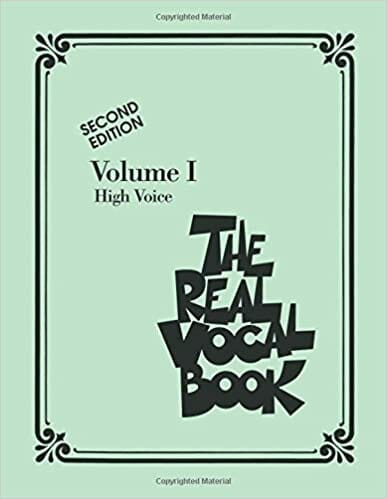B.Mus (Humber) in-progress
Adina is a singer-songwriter based in Toronto completing her Bachelor of Music degree at Humber College in vocal performance. Trained classically in piano since the age of 5, she has branched out into pop and jazz as well.
Vocally she is well-versed in many genres including jazz (she loves to scat!), musical theatre, pop, singer-songwriter, country, R&B, and acappella. She has 7 years of choir experience in both chamber and jazz styles. Adina has been writing and singing original songs since the age of 12, and has two singles as well as an EP out on all platforms under the artist name Adina V.
She has performed all across southern Ontario singing with the Toronto All-Star Big Band, as well as at various venues in the GTA with her own jazz duos and trios. As a member of the Cawthra Park Chamber Choir she performed at Roy Thompson Hall with the TSO for two years in a row. At Humber College she is part of the Vocal Jazz Ensemble led by Lisa Martinelli; this group performs advanced repertoire at events like the Ontario Vocal Jazz Festival.
Adina has been teaching music for the past 7 years and loves helping students meet their personal goals while fostering a love of music that lasts forever!
Get to know Adina…Beyond the Bio!
Hobbies: reading, puzzles, video games, painting
Musical Influences: Ella Fitzgerald, Nancy Wilson, Doris Day, Joni Mitchell, Taylor Swift, John Mayer
Favourite Food: Pad Thai
Least favourite food: eggplant
Favourite music: Indie rock and folk
Favourite song: All I Need by Jacob Collier ft. Mahalia & Ty Dolla $ign
Favourite movie: Matilda
Favourite movie music: The Pirates of the Caribbean theme
Favourite Musical: Dear Evan Hansen or The Last Five Years
Best Quote from your teacher: “It’s an amazing and wonderful experience to be able to be intentional about, in the moment, making music”
Favourite Quote: “Even as we are, we are becoming”
Favourite Book: The Girl With the Dragon Tattoo trilogy – Stieg Larsson
Best thing about teaching at ABC: Sharing and fostering a love of music with students of all ages
Latest Homework from Adina
Is Adina Your Teacher?
Sign up now to get your weekly assignments delivered, and never lose your homework sheet again!
Sunday January 17, 2021
Hello everyone, thank you for being so prepared this week!
Emet
We can move on from the D minor scales this week and focus only on the triads and inversions. Keep these HS but do try both solid and broken in each hand.
Scarborough Fair – When playing this piece, shift your focus to LH and the triads it plays; you really only have 4 shapes to worry about. Try adding pedal this week! All pedal markings are notated on the music.
Raisins and Almonds – This is our newest piece since we’ve moved on from Intermezzo; it’s based off of D harmonic minor. LH’s triad patterns are very similar to Scarborough Fair, however there are some new chords: G minor and A7. Note that there is always a common note between D minor and each of these two new chords that you can use as an anchor. In the RH melody, count out loud (with ands!) for bars with eighth notes. I’m particularly referring to bar 2 and 6. As the week goes on and you feel more comfortable, you can try putting the hands together.
Please still practice Hound Dog – we will start with it next week since this week we didn’t get to it.
Nathalia
For our warmup this week let’s continue with C and F major triads, hands separately, both solid and broken. When we play triads we play up the octave but also back down, so try incorporating that this week. When playing broken triads, connect between inversions as well as within the triads.
Bye Bye, Love – For this new song let’s start playing the first page hands separately. LH’s rhythms are super important, so label the counting underneath the phrases as needed and count out loud as you play. Remember that our saying for line notes is Good Birds Don’t Fly Away, and for space notes it’s All Cows Eat Grass. For RH’s melody, please look out for and play with all the labelled fingers since there are quite a few switches. For all those low ledger lines, think of middle C and then use skips to figure them out. This piece is in F major, so it has a Bb in the key signature (unless the note is preceded by a natural sign, like in bar 11).
Kollel
Let’s change up our warmup scale this week – we will do the D major (which has F# and C#) scale and triads. The fingering is exactly the same as for G major, so finger 3s line up on F# and B, and also thumbs line up on the middle D. For triads, since there is the F# just slide your hands closer into the keys so it’s easier to reach.
Für Elise – For the most part this piece is very solid, there are just some details I’d like to point out: in our A sections, please pay attention to LH when you are crossing over an octave – your cross should look like our scales, with thumb tucked and wrist relatively parallel to the keys. Your elbow definitely shouldn’t be lifting, and remember since you’re playing with pedal you can let go of your bottom note once you’ve played it. In the B section, bar 28, just don’t play the grace note for now until the 32nd note rhythm is solidified – since the time signature is 3/8, 8th notes get one count, 16th notes get 1/2 a count, and 32nd notes get a 1/4 of a count. The C section you are playing very fast; slow it down to the same tempo as your A sections – there is no tempo change marked here so the pulse should stay the same. In bar 82 when the chromatic section starts, it will be easier if you use classic chromatic scale fingers: 1 on white keys, 3 on black keys, and finger 2 popping in whenever there’s 2 white keys in a row.
I know we did not get to In Church this week – please still practice it as we will start with it next class.
Tuesday, January 19
Hello everyone! Thank you for being so prepared this week.
Ken
As a warmup this week, play around with starting the 5-finger scale (hands together) on different roots – use your ear and try getting both the major and minor sounds.
Song for a Scarecrow – When playing the staccatos in this song, make sure that beat 2 and beat 3 are nice and short. Use the saying “FACE in the Space” to find the space notes in treble clef.
“London” Symphony – This song is short and the notes are not too tricky, so the focus really is on the counting and articulation (staccatos and legatos). Especially bars 3-4 lets be super distinct with the quarter note vs. half note length.
Jazzy Joe – Whenever we play a piece we ideally want one tempo for the entire time – work on making the first half and second half sound unified by picking a starting speed that can work for both.
Ken is flying through the pieces in this book and will be ready in the next couple of weeks to move onto level 2 in the Piano Adventures series. We can discuss getting new books next class.
Steve
For our warmup this week, I think it would be more comfortable if we play our G (or C) major scale one hand at a time, really paying attention to the crosses. For RH the fingers are: 1-2-3-1-2-3-4-5 going up, and 5-4-3-2-1-3-2-1 going down. For LH it’s: 5-4-3-2-1-3-2-1 going up, and 1-2-3-1-2-3-4-5 going down. I’ve bolded the moments where we cross (either tucking the thumb under, or finger going over).
Skip to My Lou – Start this song just a bit slower so you can do your eighth notes comfortably, instead of them feeling rushed. When there are eighth notes in a piece we like to count 1+2+3+4+ (one “and” two “and” three “and” four “and”), where the “and”s are the half beats.
Leftover Popcorn – A circled finger number means your hand must lift and go to a new position. In bar 7, do your best to connect between the G and F# – moving your hand up into the keys will help with this. Beat four of bar 7 has a natural sign, which cancels out the F#.
Minuet – Please don’t get confused with the lyrics being numbers! Finger numbers are written above the staff for RH, and below the staff for LH. LH G (top space) is an important note this song and we keep coming back to it, so let’s try to memorize where it is on the staff. It’s not necessarily marked on the piece, but it should be played legato; please connect as much as possible including between the hands.
Gabe
I think it would be a good idea to play the Canon (in C) from your 2A book first, and then reading through the new Canon (in D). That way you can hear what the arrangement sounds like and it will serve as an aural guideline for the new key. Remember that in D major we have F# and C# in the key signature. Do pay attention to the finger numbers written since they will help you reach the right notes easily.
This week try to also practice the Theme From Don Giovanni alongside the songs from the earlier pages in the 2A book. Again, the finger numbers are there to help you so please use them! You can always start – especially less familiar songs – a little slower so you have more time to read the notes and counts.
Isaac
Please remember to do your 2 theory pages! (48-49). We also have a new song this week since we’ve moved on from Morning Greeting
Climb up on an Elephant – Before hopping in and playing the whole song through, isolate bar 19 hands together a few times so it gets more comfortable. Then, try playing the whole song hands together! Note where the hands play together, and when they are doing a call and response pattern. As always please watch your octaves – RH especially has a big range. Use Good Birds Don’t Fly Away to help you find the bass clef line notes.
Frere Jacques Stands on his Head – This piece is a round, meaning one hand starts the melody then continues on as the other hand plays the initial melody underneath. Each melodic idea is 2 bars, with RH leading. Feel free to play the song hands separately once before trying it hands together. Start a bit slower than you might want to so that you’ll be able to keep up when the eighth notes start in line 2. Most of the piece is legato but there are a few important staccatos to watch for!
Wednesday, March 24, 2021
Dvorah
Recommended minutes to practice: 10 minutes a day
What to practice: Middle C March, Ten-Second Song, and Driving on the G Clef
How to practice it most effectively: This week we introduced reading on the staff. RH reads in treble clef which is the top staff, and LH reads in bass clef, which is the bottom staff. In Middle C March, make sure you change finger numbers when there is a circled number for that bar. Try adding the dynamics – getting louder every bar of the line (mf means medium loud). Ten-Second Song and Driving on the G Clef are RH only, playing middle Cs with finger 1 as well as Gs with finger 5. G is on the 2nd line of the treble clef. In the second song, the C and G will play together whenever they are stacked!
Diya
Recommended minutes to practice: 20 minutes a day
What to practice: G major scale, triads stepping up from C major, “mee may ma mo moo” vocal warmup on the 5-note scale going up, 3-note up and down vocal warmup on “oh”, A Million Dreams
How to practice it most effectively: When playing the G major scale, we use all white keys except for our F, which becomes and F sharp (black key directly up from F). For the triads, name them as you move up (bottom letter is the first part of the name, then the quality (major or minor) is the last part of the name). For the vocal warmups, the “mee, may, ma, mo, moo” uses the 5-note scale going up (so on the piano RH would play fingers 1-2-3-4-5). Move this up a step every time, and play the piano notes first so you can hear it once. Take your time finding your starting note. The second vocal warmup was the 3-note scale going up then back down on “oh”. Start this around an E (so E-F-G on the piano), and take it down all the way to B or perhaps A carefully – the goal is to really match those low notes. For A Million Dreams, the starting/guide note for the “They can say, they can say…” part is an A above middle C, and for the chorus “Every night….” is a D above middle C. Use these notes on the piano to help you stay in the right key. This week please sing along with the official version (not the karaoke).
The Piano Adventures Lesson Book 1 can be found here: https://www.amazon.ca/Level-Lesson-Book-Piano-Adventures/dp/1616770783
Marco
Recommended minutes to practice: 15 minutes a day
What to practice: Warmup on page 5 of the new book, Princess or Monster, The Bugle Boys, and the C-E-G composition. Please also fill in the blanks for the review on pages 4-5 of the new book
How to practice it most effectively: In Princess or Monster, play the piece with the repeat, going down for the “monster” part – remember that the lower part is also slower. Have fun with this one! For The Bugle Boys be careful with the RH skips in bars 5, 7, and 9; these all go from line to line. With the quarter note – quarter rest – quarter note – quarter rest bars, make sure you are lifting on the 2 and 4 or else it will sound like half note – half note. With the C-E-G composition, be creative in how you choose to arrange the three notes, using both LH and RH and different rhythms – try to include a few rests too!
Oliver
Recommended minutes to practice: 15 minutes a day
What to practice: All notes scavenger hunt, thumbs sharing middle C warmup, Thumbs on C
How to practice it most effectively: For the scavenger hunt, start by finding all the Cs on your piano, and move up though all the letters, noticing exactly what each note looks like. The warmup is in your thumbs sharing C position: start with thumbs then go outwards using both finger 2s, 3s, etc. until you get to the 5s, then come back in to the 1s on C. Try to connect between the notes, just like our other warmups. For the song Thumbs on C, use the lyrics to help you say each note name out loud while you play – this will solidify our knowledge of all the letters on the keyboard.
Alice
Recommended minutes to practice: 15 minutes a day
What to practice: Allegro, Love You Like a Love Song
How to practice it most effectively: In Allegro, first practice just repeating the first bar a few times to get comfortable with LH holding through the whole note while RH plays its quarter and half notes. Always be double checking if notes are moving in steps (line-space) or skips (line-line). For Love You Like a Love Song, please keep singing along with the lyrics video (so no karaoke yet), focusing on the verse lyrics, as well as solidifying the bridge; your starting/guide note for the bridge is the B above middle C. Keep being strong in your chorus melody, even when Selena does her little decorative riffs.
Linda
Recommended minutes to practice: 20 minutes a day or 30 minutes every other day
What to practice: G major 4-note chords (RH and LH), Marching Trumpet (hands together), Playful Puppy (hands separately), and a preliminary look at the Pure Imagination chords
How to practice it most effectively: For the 4-note chords, continue playing the scale first, then using those notes to build 4 note chords off of every scale degree. Notice the quality (major 7, minor 7, 7 etc.) of each chord. In Marching Trumpets, go slowly and carefully when putting the hands together in bars where articulation for RH is legato and LH is staccato – what can be helpful in building the muscle memory is repeating just the first beat where one hand grounds and the other lifts until it feels more natural. There are 4 phrases in this piece – isolate phrase by phrase hands together first, then try top to bottom. For Playful Puppy, LH is mainly playing either D major triads, or Dsus triads. Remember that RH’s highest ledger line note is a D (and of course, remember your F# and C#s!). For Pure Imagination, play through the chords that look familiar, and circle any that are confusing or you cannot figure out from the chord symbol/by ear. We will start with this one next week.
Emet
Recommended minutes to practice: 20 minutes a day
What to practice: E major scale (hands separately, one octave), Scherzo, and Piano Man
How to practice it most effectively: The E major scale uses the same fingers as other scales, and has F#, C#, G#, and D#. For the Scherzo, play hands separately until the double bar line on the 2nd line of page 47. For LH, there is always a common note between two chords – use this to help you when you go back and forth. Bb is in our key signature for both D minor and F major (which is why we call them relative). For Piano Man, add bar 47 to the end to your practicing. Play hand separately until the arpeggio part which we’ve played before on pages 1-2. Please isolate bars 53-54 a few times in the RH – essentially what we are playing here are D major and G major triads. Soon we will have the whole song learned!
Kollel
Recommended minutes to practice: 25 minutes a day
What to practice: Bb major scale, Canon, Prelude
How to practice it most effectively: In the Bb major scale, RH always plays with finger 4 on Bb, finger 3 on Eb, while for LH it’s the opposite (finger 3 on Bb, 4 on Eb). In the Canon, start adding dynamics in the first few lines since they are the most comfortable. You can read until the end of the piece now! Take bars 29-36 hands separately for now, but throughout the week you may find you can play them together slowly. Please just remember to use scale fingers in the right hand for all those 16th note lines. For Prelude, make sure you are practicing by isolating the trickier lines (line 4 especially and also line 5). Isolating bar 14 and 16 for notes and articulation is a good idea, since this is the first time RH is the one playing legato and LH staccato. Please pay extra attention to the written finger numbers in line 4! In line 5, even though the rhythms are not identical, the hands are still playing the same letters at the same time (in unison).
Preferred Books for Adina’s Students
Click to buy them here, and they’ll come right to your house! What could be easier?
Alfred's Basic Piano Library Lesson Book 1A

Alfred's Adult Basic All-In-One
Alfred’s Basic Adult All-in-One Course is designed for use with a piano instructor for the beginning student looking for a truly complete piano course. It is a greatly expanded version of Alfred’s Basic Adult Piano Course that will include lesson, theory, and technique in a convenient, “all-in-one” format. This comprehensive course adds such features as isometric hand exercises, finger strengthening drills, and written assignments that reinforce each lesson’s concepts. There is a smooth, logical progression between each lesson, a thorough explanation of chord theory and playing styles, and outstanding extra songs, including folk, classical, and contemporary selections.
The Brown Scale Book
This essential resource includes all major and minor scales, triads, arpeggios, dominant sevenths, and chromatic scales organized by key. A favorite for decades, The Brown Scale Book belongs in every student’s library.
The Real Vocal Book
The Real Vocal Book has many of the selections from Volumes 1 and 2 of the instrumental Real Books, but now with complete lyrics added to the pre-existing melody line. This edition features 300 essential songs arranged for low voice, including: Alfie * All of Me * Autumn Leaves * Bewitched * Bluesette * Don’t Get Around Much Anymore * Fever * Georgia on My Mind * Misty * Moon River * My Funny Valentine * Satin Doll * and more. Looking for a particular song? Check out the Real Book Songfinder here.









